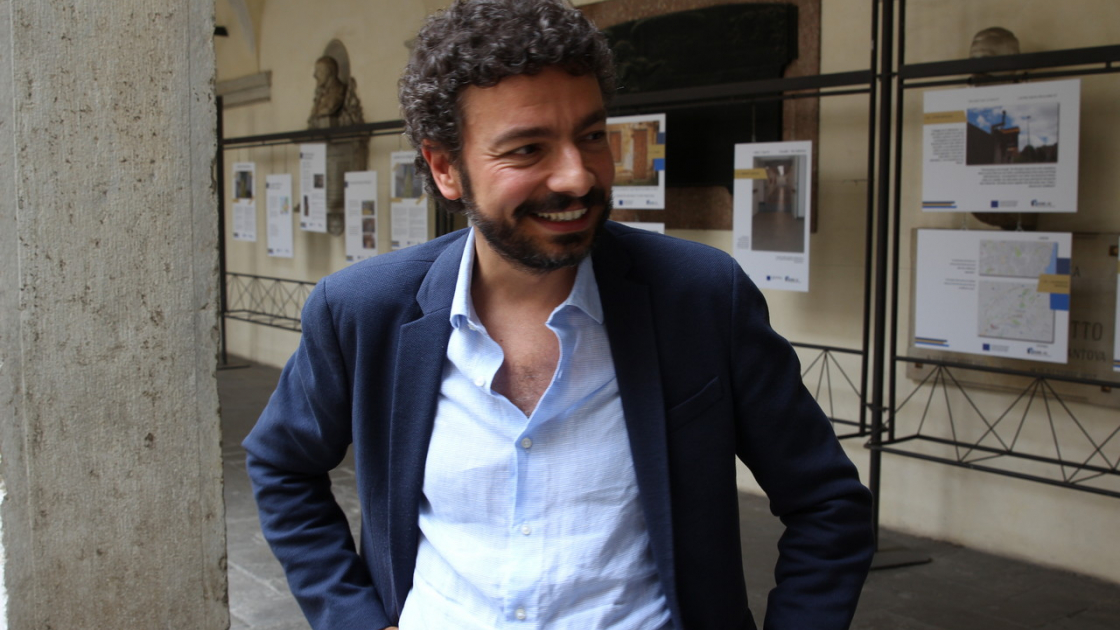Six months ago Visiting scientist At the invitation of the philosopher Naomi Oreskesin the History of Science Department of Harvard University. Massimo Polidoro, essayist, journalist, and science promoter, active on various social channels, as well as author of several books, has just arrived in Boston with a specific purpose: to deepen the role of charlatans and charlatans in investigations and research on the paranormal and pseudoscience. Claims.
Author of many books, most recently “Incredible science. How beliefs and beliefs are formed and why the worst of them never die(Feltrinelli, 2023), Polidoro is the National Secretary of CICAP (“Italian Commission for the Control of Pseudoscience Claims”) founded by Piero Angela in the late 1980s and founder of Cecap FestivalThe Science Festival, which will be held in its sixth edition in the city of Padua from 13 to 15 October next.
Piero Angela was Massimo Polidoro’s private mentor, not a friend and colleague. In fact, it is to him that Polidoro owes the start of his career and his first American experience: Angela sent him, still very young, to the United States for a year of study and apprenticeship with the famous magician and occult investigator James Randi. This experience became important when, on his return, Piero Angela founded Cicap in 1989 and asked Polidoro to help him develop the new organisation. In recent years, Polidoro himself founded and launched CicapFest, a science festival that will return to Padua from October 13-15 for its sixth edition.
Back to the site of first scientific interest
Now, nearly 30 years after that first long American trip, Massimo Polidoro is back in the US for another 6-month study period. “I will raise to the ninth degree everything that I have done during these years, the work that I have done over these years on the relationship between science, illusion and pseudoscience,” Polidoro tells Bo Live. During the 20th century, those who had to deal with people who claimed to have supernatural abilities, people who were manipulative and deceitful, were at risk of being charmed and deceived. Had it not been for the intervention of some very experienced characters in the realm of illusion, or what we call magic, who already had great aptitude and ability to create illusions, but at the same time were able to recognize them, these mechanisms and techniques could have already caused a lot of damage. Those who know well how an illusion is created also know how to detect it. And Polidoro tells us that the stories are many and really wonderful.
The problem, of course, still exists. It is also for this reason that Polidoro finds common ground with the scholarly work of the philosopher Oryxus. Because even today it happens that we read articles, like the one he recently published The New York TimesAdds the writer, who uncritically amplifies the abilities of a character like Uri Geller, the self-proclaimed psychic and mineralogist who has been repeatedly exposed by James Randi and other experts. The interesting question that misses many, not only the sordid public but sometimes even those in the scientific field, is that there is a difference between ethically questionable and even harmful behavior, such as that of those who claim to possess real superpowers, and those who make Pure and sincere entertainment by admitting in a transparent way that they are creating a magical illusion. The intellectual challenge is precisely to look and observe and try to understand what is behind this illusion, what is the trick, and the mechanism. Hence a distinction must be made between ethical practice and fraud which can also cause harm.
The relationship between science and illusion is even more fascinating today
There are many nuances, and at Harvard specifically, Polidoro continues, there have been some great stories about these issues. Here he studied medicine William Jameswho then devoted himself to psychology and was attracted to psychological research in those years, and also became president of the Society. Association for Psychological Research In 1894. And at Harvard University, a group of researchers took part in seances of a very popular method from Boston at that time. was called Margery She was the wife of a famous surgeon. So she was a rich lady, and she didn’t earn from her sessions but she claimed to have real psychic powers. magazine Scientific American He decides to offer a cash prize and forms a committee that can either confirm these powers or expose the broker. Houdini also participated in this commission, and he is the one who understands the tricks and unmasks the medium. It’s an exciting case that also received huge media coverage, and so, for Polidoro, another reason to go into the archives and recover this story and many others.
How important, then, is it in thinking about the relationship between science and illusion? Develop scientific knowledge? Today we know better how our brain reacts to a series of external stimuli and we better understand the mechanism of vision as well as our reactions when faced with unexpected information. Polidoro explains that the more we can understand how our brain works, the more research will shed light on our capabilities and the limitations of our brain as well. And so we must increasingly take it into account also in scientific research and study. Because it’s easy to be fooled into wanting to find confirmation of your search, thus confirmation biasAnd we may end up setting the data to go in exactly that direction. But it is precisely by analyzing these mechanisms that we can understand how they contribute to original scientific research, while leaving out pathways that do not produce any solid results.
Finally, one of the challenges will undoubtedly remain the challenge of Tell the results This research is in a context, such as the current one, that tends to be increasingly difficult and polarizing, in which the scientific method is almost brandished as an element of confrontation rather than an arena for reflection and dialogue. In fact, Polidoro concludes, he has always tried to make people understand that science is not that ivory tower that excludes all the unelected. On the contrary, it must be repeated The humility of science itself as a form of knowledge. Personalities aside, this should be itapproach to knowledge: by definition a modest method that always pushes itself to investigate and search for more elements of understanding and also accepts its denial in the event of new evidence. The constant conflict and constant polarization don’t help connect things.
So, armed with much curiosity, Massimo Polidoro is ready to return to research in what, just 30 years ago, was his first field of study, the field to which he had devoted himself on his first voyage. In conclusion, he tells us that many things have changed, and what seemed like a very specific field of study and interest is now more legitimate and interesting, because it reveals a lot about how our minds really work. “I am looking forward to Immerse yourself in these extraordinary archivesWelcome, he adds: we’ll see. We leave room for uncertainty.

“Evil zombie trailblazer. Troublemaker. Web enthusiast. Total music fan. Internet junkie. Reader. Tv guru.”







More Stories
Enrico Papi: “No one laughed at my comedy shows. I have been married for 26 years but I feel fluid. “Mrs. Ciampi said I was a fool.”
It's Always Midday, a chilling backstory about a beloved chef's farewell: 'The journey began without explanations'
Oriana Marzoli: new discoveries about Cristiano Ivino and Daniele Dal Moro: “I cried for him”